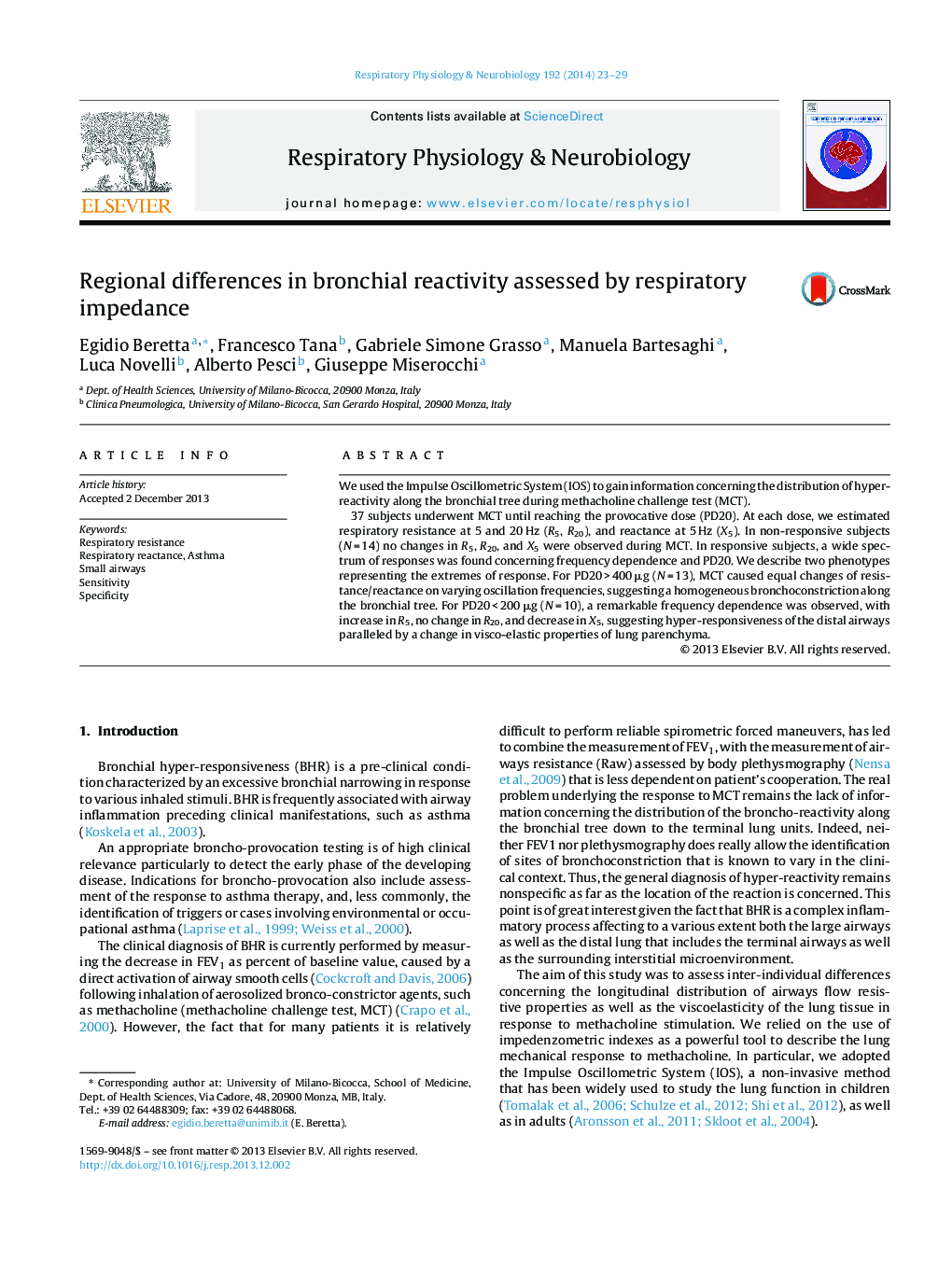| Article ID | Journal | Published Year | Pages | File Type |
|---|---|---|---|---|
| 2847037 | Respiratory Physiology & Neurobiology | 2014 | 7 Pages |
•We assessed from resistance/reactance values the individual response to methacholine test.•For PD20 > 200 μg, poor frequency dependence suggests homogeneous bronchoconstriction.•For PD20 < 200 μg high frequency dependence suggests responsiveness of the distal airways.
We used the Impulse Oscillometric System (IOS) to gain information concerning the distribution of hyper-reactivity along the bronchial tree during methacholine challenge test (MCT).37 subjects underwent MCT until reaching the provocative dose (PD20). At each dose, we estimated respiratory resistance at 5 and 20 Hz (R5, R20), and reactance at 5 Hz (X5). In non-responsive subjects (N = 14) no changes in R5, R20, and X5 were observed during MCT. In responsive subjects, a wide spectrum of responses was found concerning frequency dependence and PD20. We describe two phenotypes representing the extremes of response. For PD20 > 400 μg (N = 13), MCT caused equal changes of resistance/reactance on varying oscillation frequencies, suggesting a homogeneous bronchoconstriction along the bronchial tree. For PD20 < 200 μg (N = 10), a remarkable frequency dependence was observed, with increase in R5, no change in R20, and decrease in X5, suggesting hyper-responsiveness of the distal airways paralleled by a change in visco-elastic properties of lung parenchyma.
